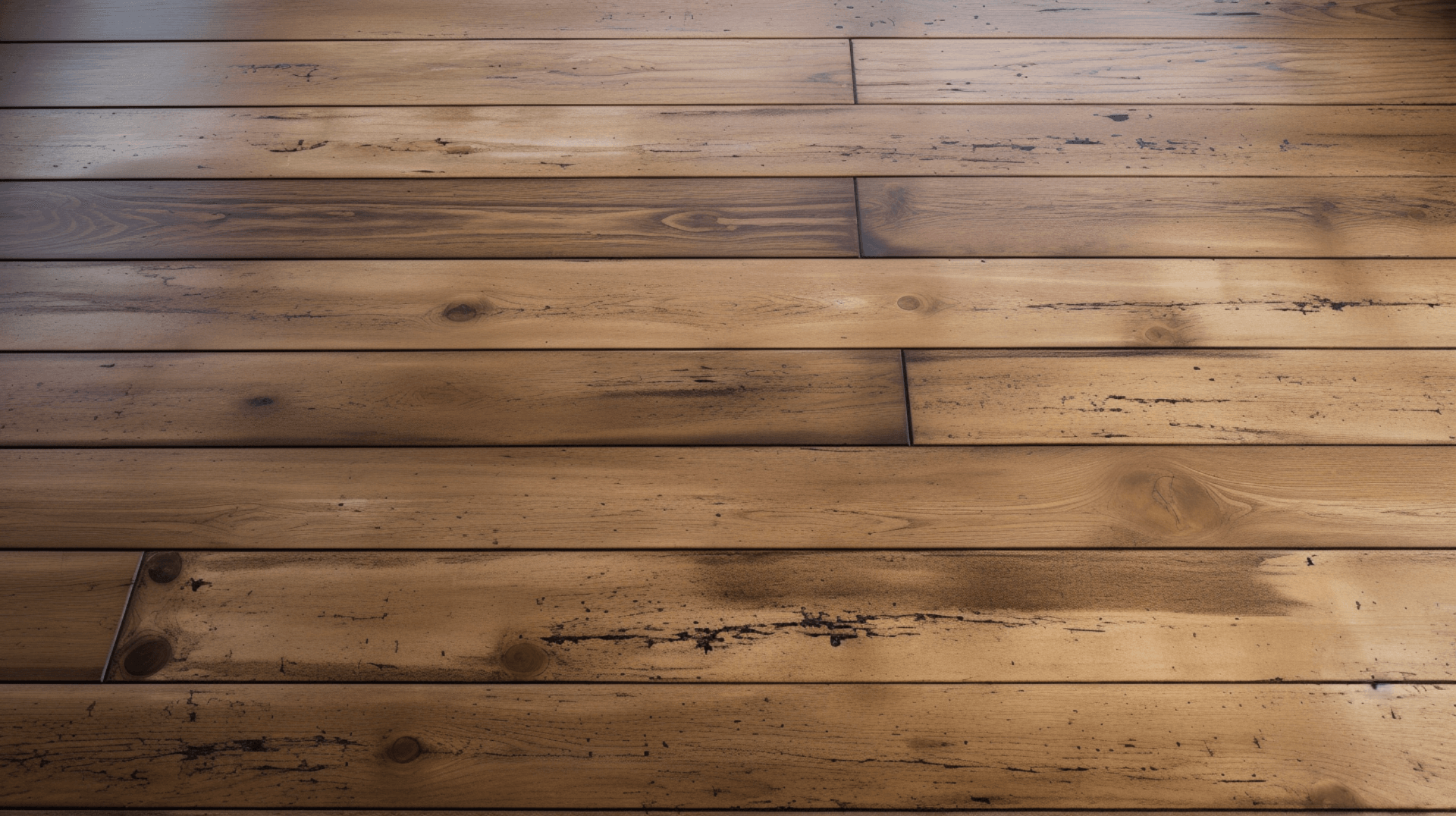Understanding the Importance of Sanding and Refinishing Your Wooden Floor
Sanding and refinishing your wooden floor is an important part of maintaining its beauty and durability. It helps to remove imperfections, old finishes, and signs of wear and tear, while adding a protective layer and enhancing the floor’s appearance. Regular sanding and refinishing can help extend the lifespan of your wooden floor and keep it looking great for many years.
Additionally, it is important to consider the impact of wet-trades and the temperature and relative humidity in the room(s) where the flooring is being installed. Wet-trades such as concrete, masonry, plastering, drywall, texturing, painting, and power washing should be completed within the building thermal envelope. Testing and documenting the temperature and relative humidity in each room is crucial, as it helps ensure that the interior conditions meet the manufacturer’s requirements for the flooring installation.
By following these guidelines and regularly sanding and refinishing your wooden floor, you can protect it from scratches, dents, discoloration, and water damage. This maintenance process helps restore the floor’s original beauty, making it look like new again. It also adds a protective layer that enhances the floor’s durability and extends its lifespan.
To ensure the best results, it is recommended to hire professional sanding and refinishing services. Professionals have the expertise, experience, and specialized equipment to properly sand and refinish your wooden floor. We can also provide advice on the best techniques and products to use, taking into account the specific conditions of your space.
Decoding the Frequency: How Often Should You Sand and Refinish Your Wooden Floor?
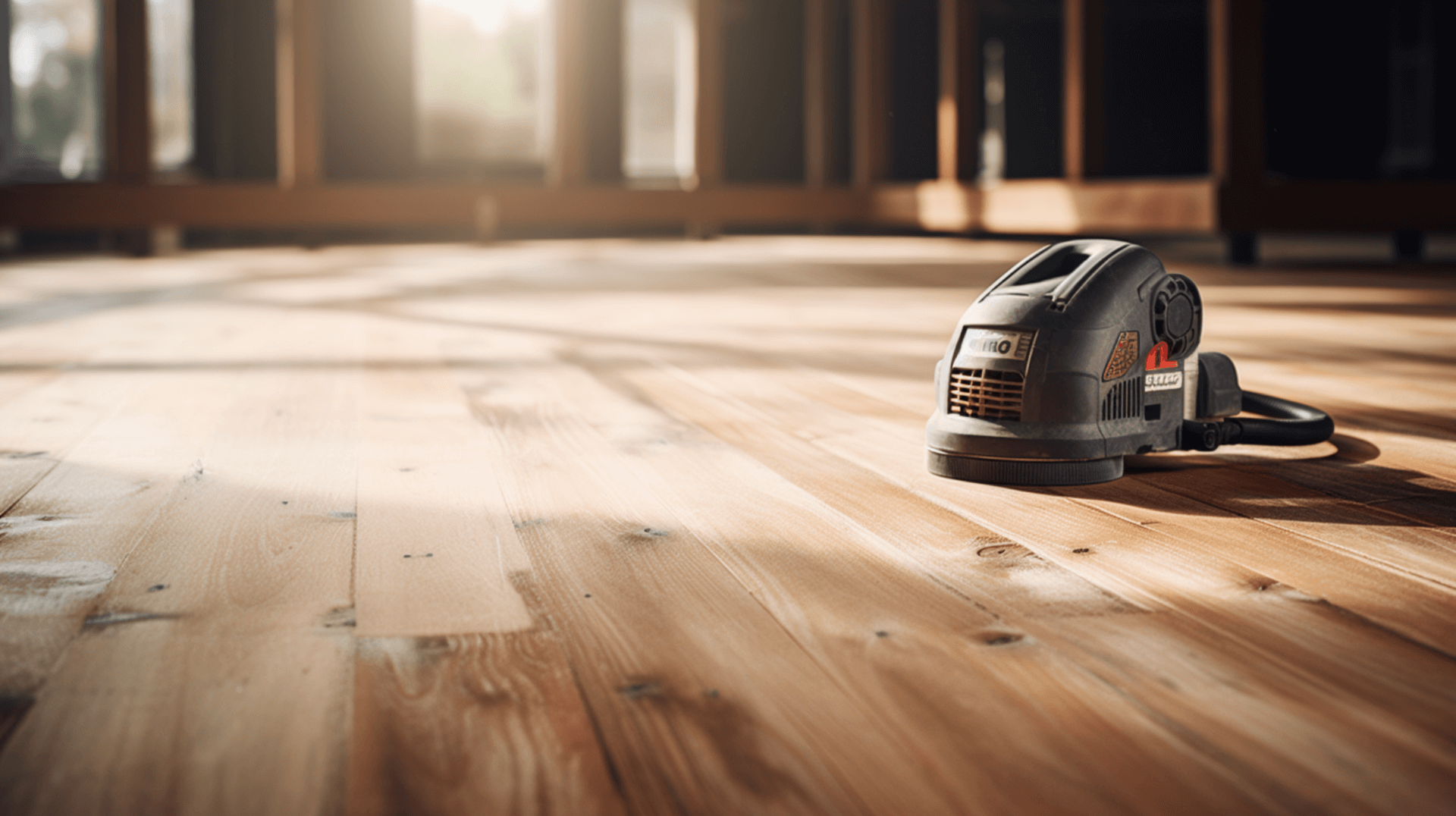
The frequency of sanding and refinishing your wooden floor depends on several factors, including the type of wood, the usage of the floor, the condition of the floor, and the type of insulation used in the area.
Solid hardwood floors, being more susceptible to wear and tear, generally require more frequent sanding and refinishing compared to engineered hardwood or laminate floors. High-traffic areas like hallways and living rooms may need to be maintained more often than low-traffic areas like bedrooms and bathrooms.
The condition of the floor is also important. If the floor is in good condition with no visible damage or signs of wear, it may not need to be sanded and refinished as often. if the floor is showing significant wear and tear, it may require more frequent maintenance.
The type of insulation used in the area can also affect the frequency of sanding and refinishing. Some insulation materials may require different sanding and refinishing techniques, which can impact the maintenance schedule.
In general, solid hardwood floors should be sanded and refinished every 3-5 years, while engineered hardwood and laminate floors may only need to be refinished every 5-7 years. these are general guidelines, and the frequency may vary depending on the specific factors mentioned above.
By considering these factors and regularly inspecting the condition of the floor, homeowners and business owners can determine the appropriate frequency for sanding and refinishing their wooden floors.
Recognizing the Signs: When Does Your Wooden Floor Need Sanding and Refinishing?

Visible signs that your wooden floor needs sanding and refinishing include scratches, dents, discoloration, loose boards, gaps, and water damage. Additionally, it is important to inspect the condition of any steel supports in the sub-floor void, for signs of corrosion, deflection, and rotted fixings. It is also important to check for any appliances that use combustion and require ventilation, as well as any hazardous materials that may contain asbestos. If the floor has been sanded and refinished before, you may be able to tell by looking for a glossy finish or a uniform color. If the floor has not been sanded and refinished, it may have a dull finish or an uneven color.
The potential risks of not sanding and refinishing your wooden floor when needed include further damage to the floor, such as scratches, dents, discoloration, and water damage. Additionally, neglecting to sand and refinish your wooden floor can reduce its lifespan and make it more susceptible to wear and tear. It can also lead to an accumulation of dirt and debris, which can cause the floor to become slippery and unsafe. Furthermore, not addressing the condition of steel supports in the sub-floor void can result in structural issues and potential hazards.
To ensure the longevity and safety of your wooden floor, it is important to recognize the signs that it needs sanding and refinishing and take action accordingly. Regular maintenance and timely refinishing can help preserve the quality and appearance of your wooden floor for years to come. Additionally, addressing any structural issues and potential hazards in the sub-floor void is crucial for maintaining the integrity of your floor.
Preparing for the Process: How to Get Your Wooden Floor Ready for Sanding and Refinishing?
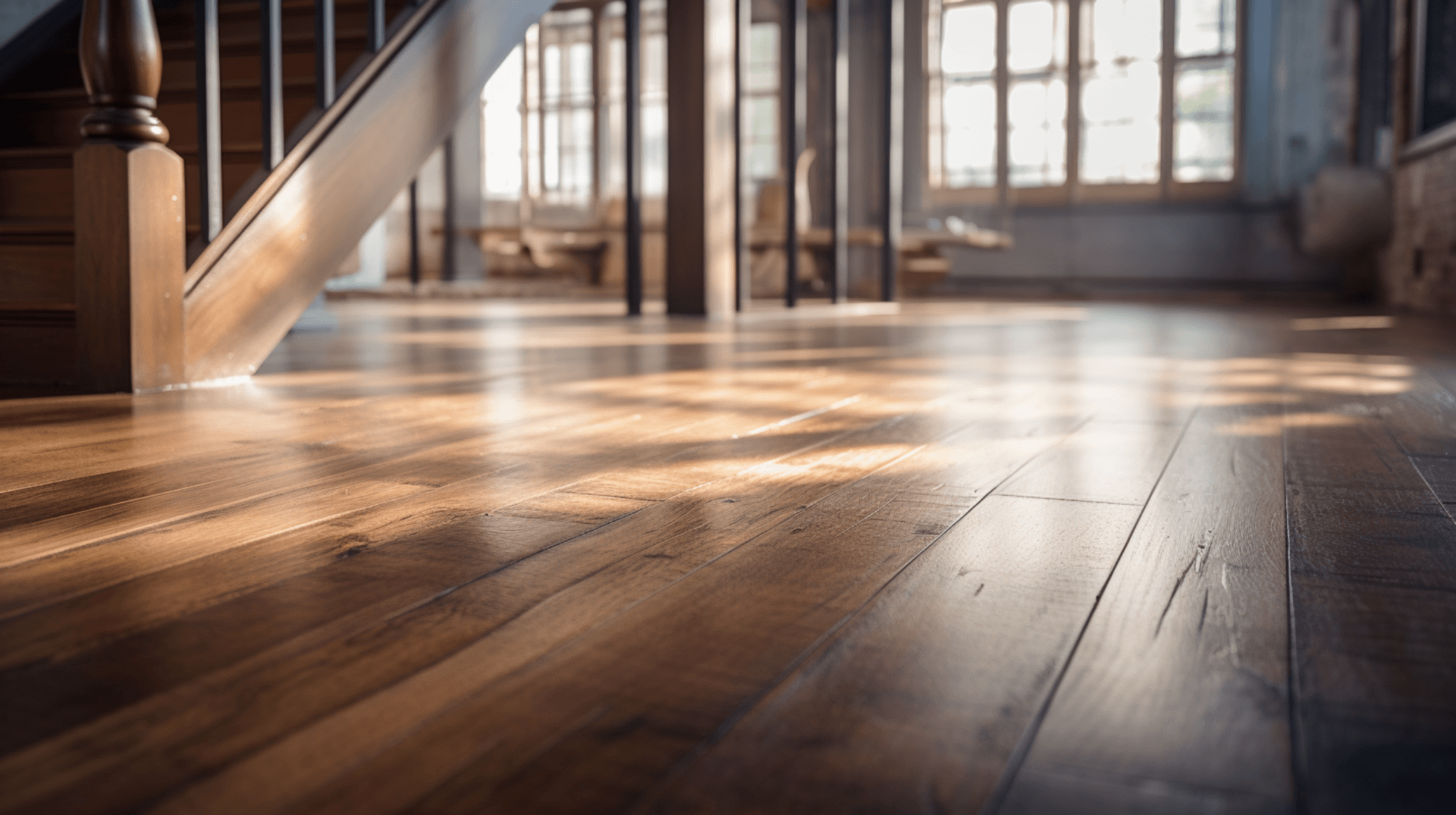
To prepare your wooden floor for sanding and refinishing, follow these steps:
-
Remove all furniture and belongings from the room or cover them with plastic sheeting to protect them from dust and debris.
-
Vacuum the floor to remove any dirt and debris.
-
Remove any existing wax or sealant from the floor using a wax stripper or appropriate cleaning product.
-
Inspect the floor for any signs of damage, such as scratches, dents, discoloration, and water damage. Address any issues before proceeding with sanding and refinishing.
-
Check for any structural issues in the sub-floor void, such as corrosion, deflection, and rotted fixings. Address any structural issues to ensure the stability of the floor.
-
Ensure that any appliances that use combustion and require ventilation, such as gas heaters or fireplaces, are in good working order and properly vented.
-
Check for any hazardous materials that may contain asbestos. If you suspect the presence of asbestos, consult a professional for proper testing and removal.
-
Cover any vents or air ducts with plastic sheeting to minimize dust and disruption during the sanding and refinishing process.
-
Leave room for expansion around the edges of each room to accommodate changes in humidity and prevent buckling or warping of the floor.
By following these steps, you can properly prepare your wooden floor for sanding and refinishing, ensuring the best results and protecting your investment.
Choosing the Right Method: What are the Different Types of Sanding and Refinishing Techniques?
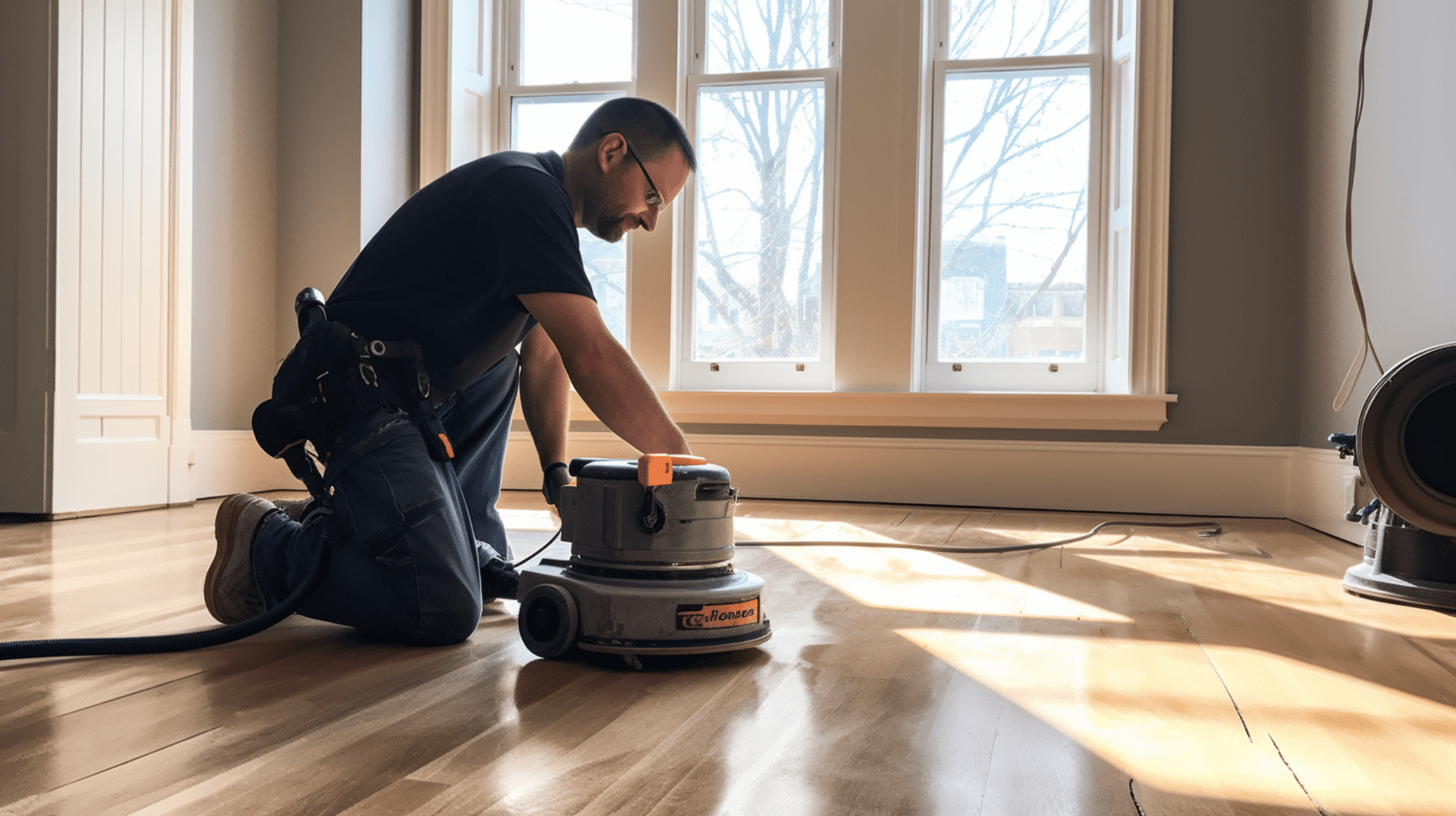
There are several different types of sanding and refinishing techniques used for wooden floor sanding. The most common methods are drum sanding, belt sanding, and orbital sanding. Each method has its own advantages and disadvantages, so it is important to choose the right one for your floor.
Drum sanding is the most aggressive type of sanding and is typically used for heavily damaged floors. It involves a large drum-shaped sander that is attached to a powerful motor. The sander is moved across the floor in a circular motion, removing the top layer of wood and exposing the fresh wood underneath. This method is effective for removing deep scratches and dents, but it can also cause damage to the floor if not done properly.
Belt sanding is a less aggressive method and is often used for floors that are in good condition. It involves a belt sander that is attached to a motor and is moved across the floor in a linear motion. This method is effective for removing minor scratches and dents, but it can also leave a rough finish if not done properly.
Orbital sanding is the least aggressive type of sanding and is typically used for floors that are in good condition. It involves an orbital sander that moves in a random orbital motion, removing the top layer of finish and preparing the floor for refinishing. This method is effective for removing surface scratches and imperfections, but it may not be as effective for deep scratches and dents.
When choosing the right sanding and refinishing method for your wooden floor, consider the condition of the floor, the type of wood, and the desired outcome. Drum sanding is best suited for heavily damaged floors, while belt sanding and orbital sanding are better suited for floors in good condition. It is also important to consider the potential risks and benefits of each method, as well as the expertise and equipment required for each technique. Additionally, take into account the impact of wet-trades and the temperature and relative humidity in the room(s) where the flooring is being installed.
The Sanding Process: What Does It Involve and What Equipment is Used?

The sanding process for wooden floors involves several steps and requires specialized equipment. The first step is to remove any existing wax or sealant from the floor using a wax stripper or appropriate cleaning product. This is followed by a thorough vacuuming to remove any dirt and debris.
The next step is to inspect the floor for any signs of damage, such as scratches, dents, discoloration, and water damage. Any issues should be addressed before proceeding with sanding and refinishing. It is also important to check for any structural issues in the sub-floor void, such as corrosion, deflection, and rotted fixings. Additionally, it is important to check for any appliances that use combustion and require ventilation, as well as any hazardous materials that may contain asbestos.
The type of sanding equipment used depends on the type of wood and its condition. Drum sanding is the most aggressive type of sanding and is typically used for heavily damaged floors. Belt sanding is a less aggressive method and is often used for floors that are in good condition. Orbital sanding is the least aggressive type of sanding and is typically used for floors that are in good condition.
The sanding process itself involves using progressively finer grit sandpaper to achieve a smooth surface. The initial pass is done with the coarsest grit sandpaper to remove old finishes and significant imperfections. The main part of the floor is sanded using the drum or orbital sander, while the areas near walls are sanded using the edger. Corners can be sanded using a hand scraper. After each pass, the dust should be vacuumed or swept up before moving on to the next finer grit sandpaper. This process is repeated until a smooth surface is achieved.
By following these steps and using the appropriate equipment, you can effectively sand and refinish your wooden floor, restoring its beauty and durability.
The Refinishing Process: What Does It Involve and What Materials are Used?

The refinishing process for wooden floors involves several steps and requires specialized equipment. The first step is to sand the floor using progressively finer grit sandpaper to achieve a smooth surface. This is followed by a thorough vacuuming to remove any dust and debris.
Once the floor is sanded, it is ready to be refinished. There are several types of finishes available for wooden floor refinishing, including oil-based polyurethane, water-based polyurethane, and wax. Oil-based polyurethane is the most popular choice, as it provides a durable finish that is resistant to scratches and scuffs. Water-based polyurethane is a more eco-friendly option, as it is low in VOCs and has a faster drying time. Wax is a natural finish that provides a matte look.
The refinishing process differs based on the type of wood and its condition. Solid hardwood floors generally require more frequent sanding and refinishing compared to engineered hardwood or laminate floors. High-traffic areas like hallways and living rooms may need to be maintained more often than low-traffic areas like bedrooms and bathrooms. Additionally, if the floor is in good condition with no visible damage or signs of wear, it may not need to be sanded and refinished as often.
By following the appropriate refinishing process and using the right materials, homeowners and business owners can restore the beauty and durability of their wooden floors. It is important to consider the specific needs of the wood and its condition to ensure the best results.
PostProcess Care: How to Maintain Your Wooden Floor After Sanding and Refinishing?
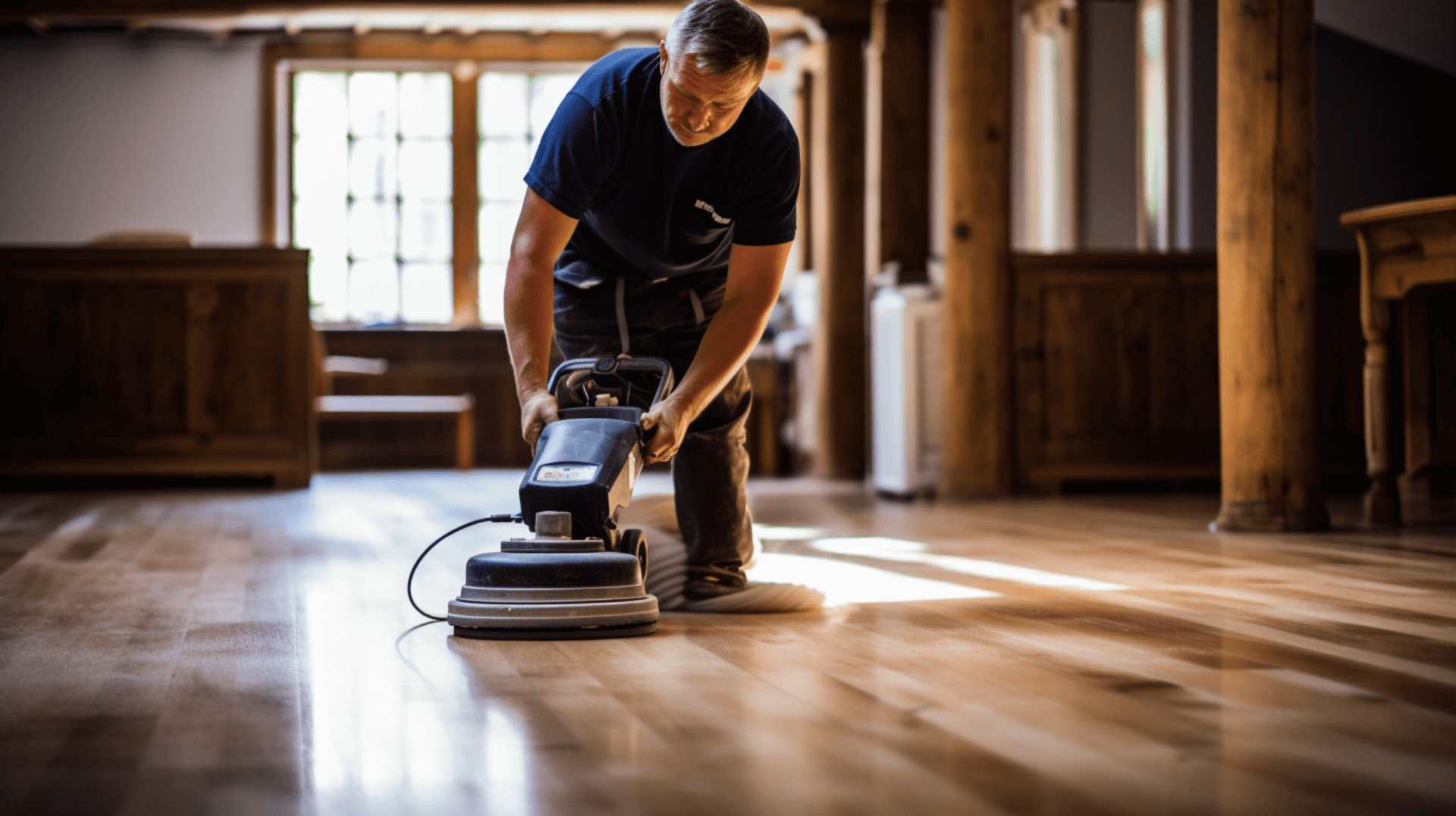
After sanding and refinishing your wooden floor, it is important to follow proper care and maintenance steps to ensure its longevity and beauty. Here are some tips for maintaining your refinished wooden floor:
-
Regular Cleaning: Regularly sweep or vacuum your floors to remove dirt and debris. This will prevent dirt and debris from scratching the surface of your floors. Use a soft brush attachment on your vacuum to avoid scratching the floor. You can also use a damp mop or cloth to clean the floor, but avoid using excessive amounts of water as this can damage the finish.
-
Preventive Measures: To prevent damage to your refinished wooden floor, place mats or rugs at entrances and high-traffic areas to reduce wear and tear. This will help protect the floor from scratches and dents caused by furniture and foot traffic. Additionally, use furniture protectors or felt pads under furniture legs to prevent scratches.
-
Avoid Moisture: Moisture can cause warping and discoloration of the wood, so it is important to avoid moisture as much as possible. Wipe up spills immediately and use a dehumidifier to reduce humidity levels in the room.
-
Use the Right Cleaning Products: When cleaning your floor, use a mild soap and warm water. Avoid using harsh chemicals or abrasive cleaners, as these can damage the finish. Use a specialized wood floor cleaner to remove dirt and grime that can build up.
-
Inspect for Abnormalities: Regularly inspect your refinished wooden floor for any signs of abnormal shrinkage, swelling, or damage. Address any issues promptly to prevent further damage.
By following these care and maintenance steps, you can keep your refinished wooden floor looking beautiful and lasting for years to come.
DIY vs Professional Services: What are the Pros and Cons?

DIY vs Professional Services: What are the Pros and Cons?
Sanding and refinishing your wooden floor yourself can have several benefits. It can be a cost-effective option, as DIY projects are often completed at a fraction of the cost of professional services. It can also be a rewarding experience, allowing homeowners and business owners to learn new skills and gain a sense of accomplishment. DIY projects can be completed on your own schedule, giving you more flexibility.
There are also drawbacks to diy sanding and refinishing. it can be time-consuming, especially if you are not experienced or knowledgeable in the process. diy projects may require specialized tools and equipment, which can be expensive to purchase or rent. there is also a risk of damaging the floor if the process is not done correctly, such as sanding through the finish coat or using the wrong cleaning products.
On the other hand, hiring professional services like GJP Floor Sanding can provide several advantages. Professionals have the experience and expertise to complete the job quickly and efficiently, saving you time and effort. We also have access to the latest tools and techniques, ensuring a high-quality finish. Professional services often provide a warranty on our work, giving you peace of mind and protection against any issues that may arise.
When deciding between DIY and professional services, it is important to consider your specific needs and circumstances. If you have the time, resources, and knowledge to complete the project yourself, DIY may be the best option. if you are short on time, lack the necessary tools and expertise, or want a guaranteed high-quality finish, professional services may be the better choice. Additionally, if your floor is in poor condition or has structural issues, it is best to hire a professional to ensure the best results.
Understanding the Costs: How Much Does Sanding and Refinishing a Wooden Floor Cost?
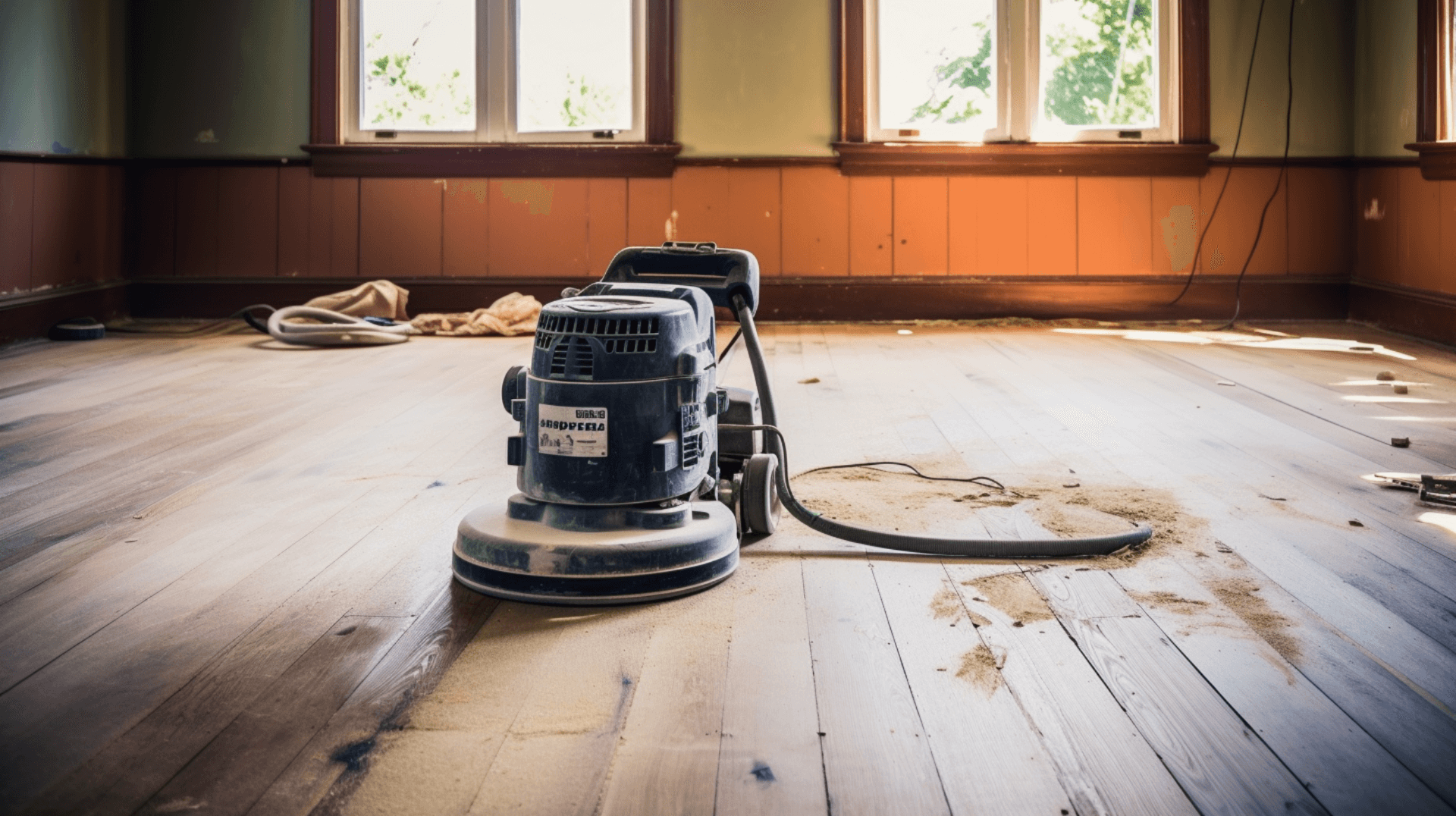
Understanding the Costs: How Much Does Sanding and Refinishing a Wooden Floor Cost?
The cost of sanding and refinishing a wooden floor can vary depending on several factors, such as the size of the floor, the type of wood, the condition of the floor, and the type of floor construction. Generally, larger floors will cost more to sand and refinish than smaller floors, as more materials and labor are required. The type of wood can also affect the cost, as some woods are more expensive than others. Additionally, the condition of the floor can influence the cost, as floors in poor condition may require more extensive sanding and refinishing. The type of floor construction can also affect the cost, as suspended timber ground floors require additional materials and labor for the installation of damp-proof courses, wall plates, and vents.
The cost of DIY sanding and refinishing is typically lower than hiring professional services, as you will only need to purchase the necessary materials and equipment. DIY projects can be time-consuming and require specialized tools and knowledge, so it is important to consider the time and effort required before starting the project.
When budgeting for your wooden floor sanding and refinishing project, it is important to consider the cost of materials, tools, and labor. Research the cost of materials and tools to get an idea of the total cost of the project. If you are hiring professional services, get quotes from several companies to compare prices and services. Additionally, consider the cost of any additional services, such as floor repairs or staining.
Overall, the cost of sanding and refinishing a wooden floor can vary greatly depending on the specific factors involved. It is important to carefully consider your budget and the desired outcome of the project before making a decision.
Expert Insights: What Do GJP Floor Sanding Experts Say About Sanding and Refinishing Frequency?
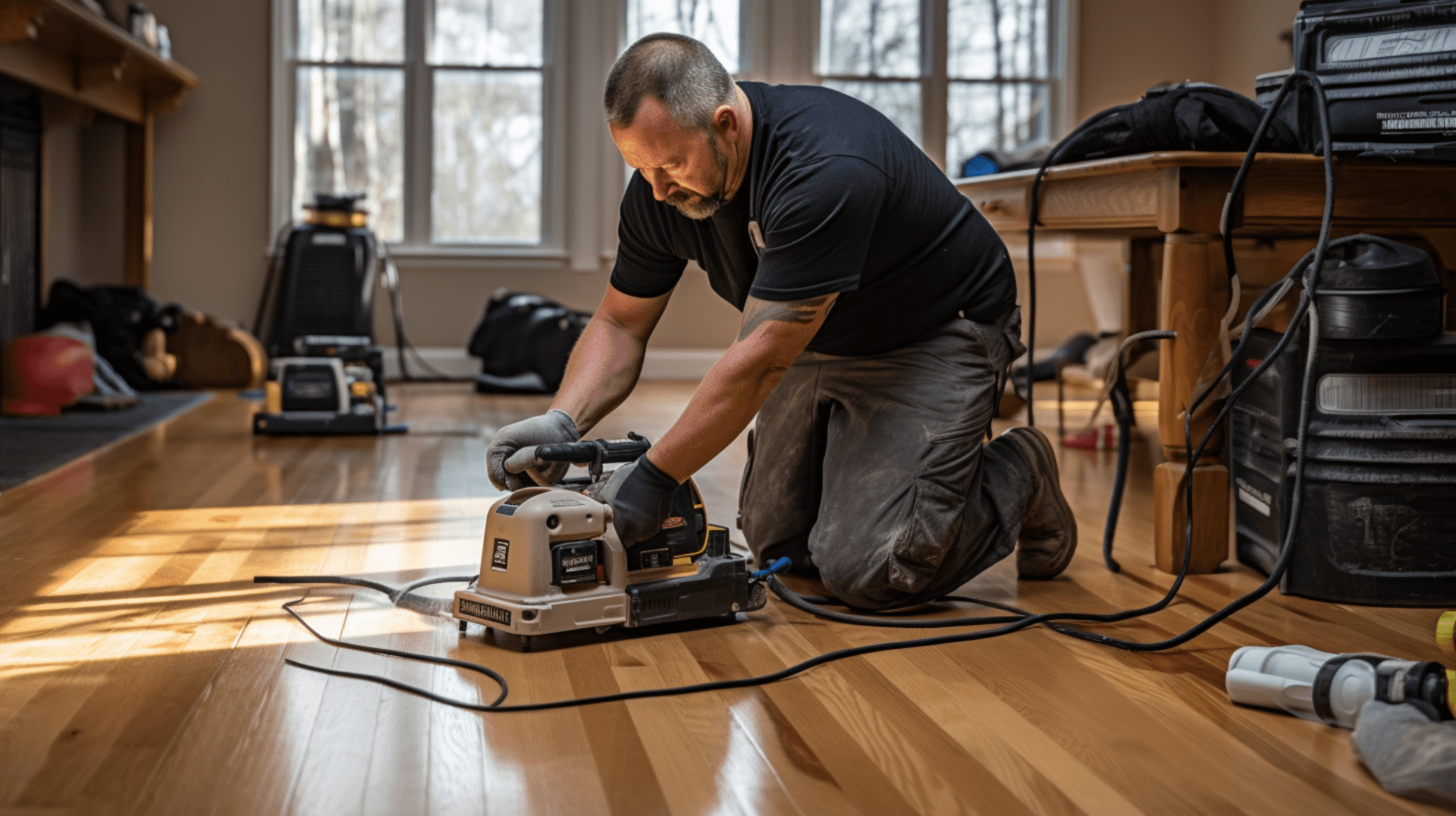
GJP Floor Sanding experts recommend sanding and refinishing your wooden floor every 3-5 years, depending on the type of wood and its condition. Solid hardwood floors generally require more frequent sanding and refinishing compared to engineered hardwood or laminate floors. High-traffic areas like hallways and living rooms may need to be maintained more often than low-traffic areas like bedrooms and bathrooms. Additionally, if the floor is in good condition with no visible damage or signs of wear, it may not need to be sanded and refinished as often.
GJP Floor Sanding’s expertise can help you maintain your wooden floor effectively. Our experienced professionals can provide advice on the best sanding and refinishing techniques for your specific floor, as well as the best products and materials to use. We can also provide guidance on the frequency of sanding and refinishing, as well as preventive measures to reduce wear and tear. We recommend using mats or rugs at entrances and high-traffic areas to reduce wear and tear, as well as using furniture protectors or felt pads under furniture legs to prevent scratches. We also advise avoiding moisture as much as possible, wiping up spills immediately, and using the manufacturer’s recommended cleaning products.
By following the recommendations and insights from GJP Floor Sanding experts, you can effectively maintain your wooden floor and ensure its longevity and beauty. Our expertise can help you determine the appropriate frequency of sanding and refinishing based on your specific floor’s needs. We can also provide valuable tips and advice on preventive measures and proper care to minimize damage and keep your wooden floor looking its best.
Ready to Start Your Wooden Floor Sanding and Refinishing Project? Contact GJP Floor Sanding
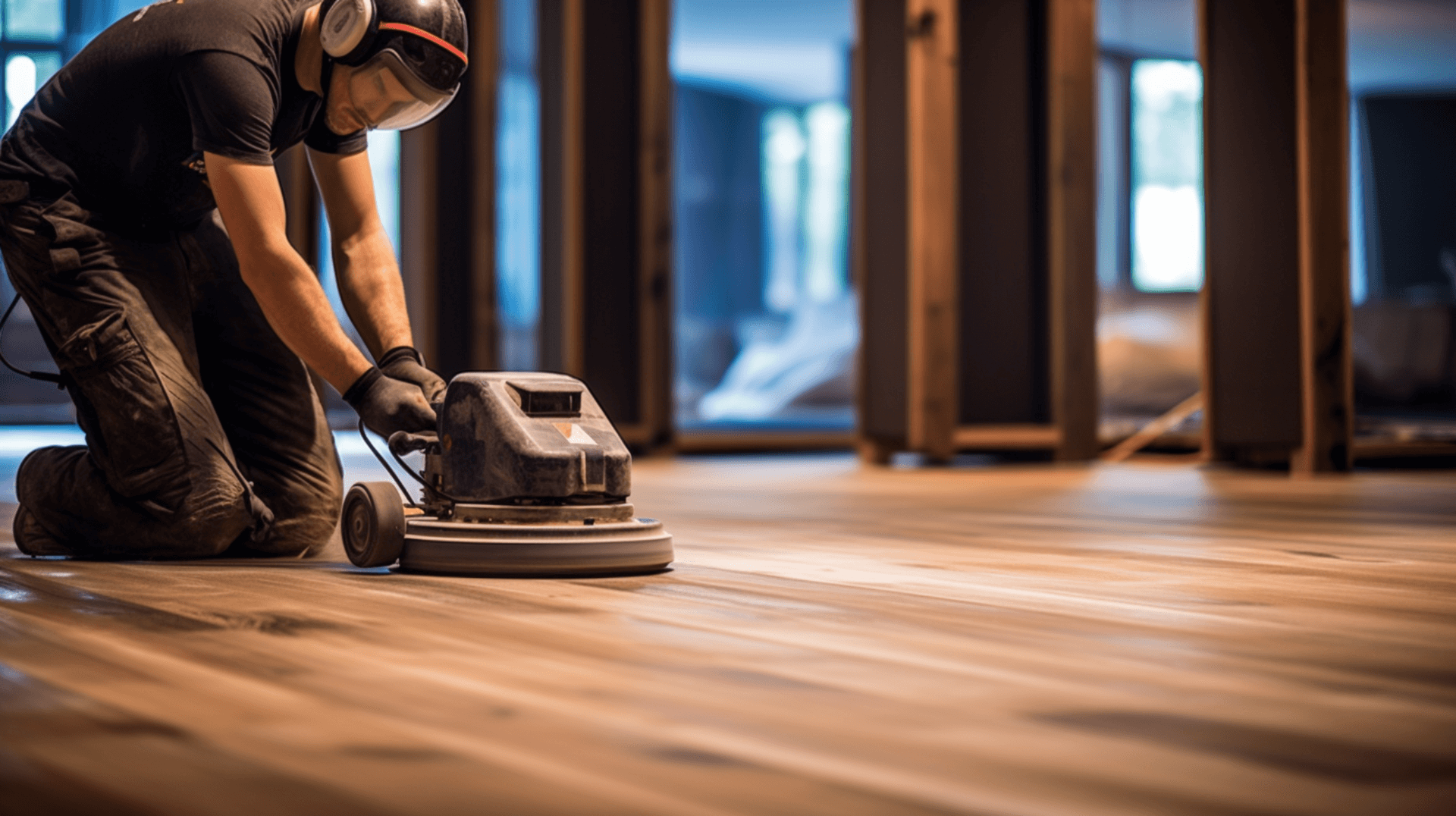
Ready to Start Your Wooden Floor Sanding and Refinishing Project? Contact GJP Floor Sanding.
If you are a home or business owner in need of wooden floor sanding and refinishing services, look no further than GJP Floor Sanding. With over 20 years of experience, our team of experts can provide the highest quality of workmanship and customer service.
GJP Floor Sanding offers a comprehensive range of services to meet your needs. From sanding and refinishing to repairs and staining, we have you covered. Our experienced professionals can provide expert advice on the best techniques for your specific floor, as well as the best products and materials to use. We can also guide you on the frequency of sanding and refinishing, as well as preventive measures to reduce wear and tear.
When you choose GJP Floor Sanding, you can expect competitive rates and a satisfaction guarantee. We are fully insured and offer a warranty on our work, giving you peace of mind and protection against any issues that may arise. We also provide free estimates and can work with any budget.
To get in touch with GJP Floor Sanding for your wooden floor sanding and refinishing needs, simply contact us through our website or give us a call. Our friendly and knowledgeable team is ready to assist you and provide the best possible service. Don’t wait any longer to restore the beauty of your wooden floor – contact GJP Floor Sanding today.
